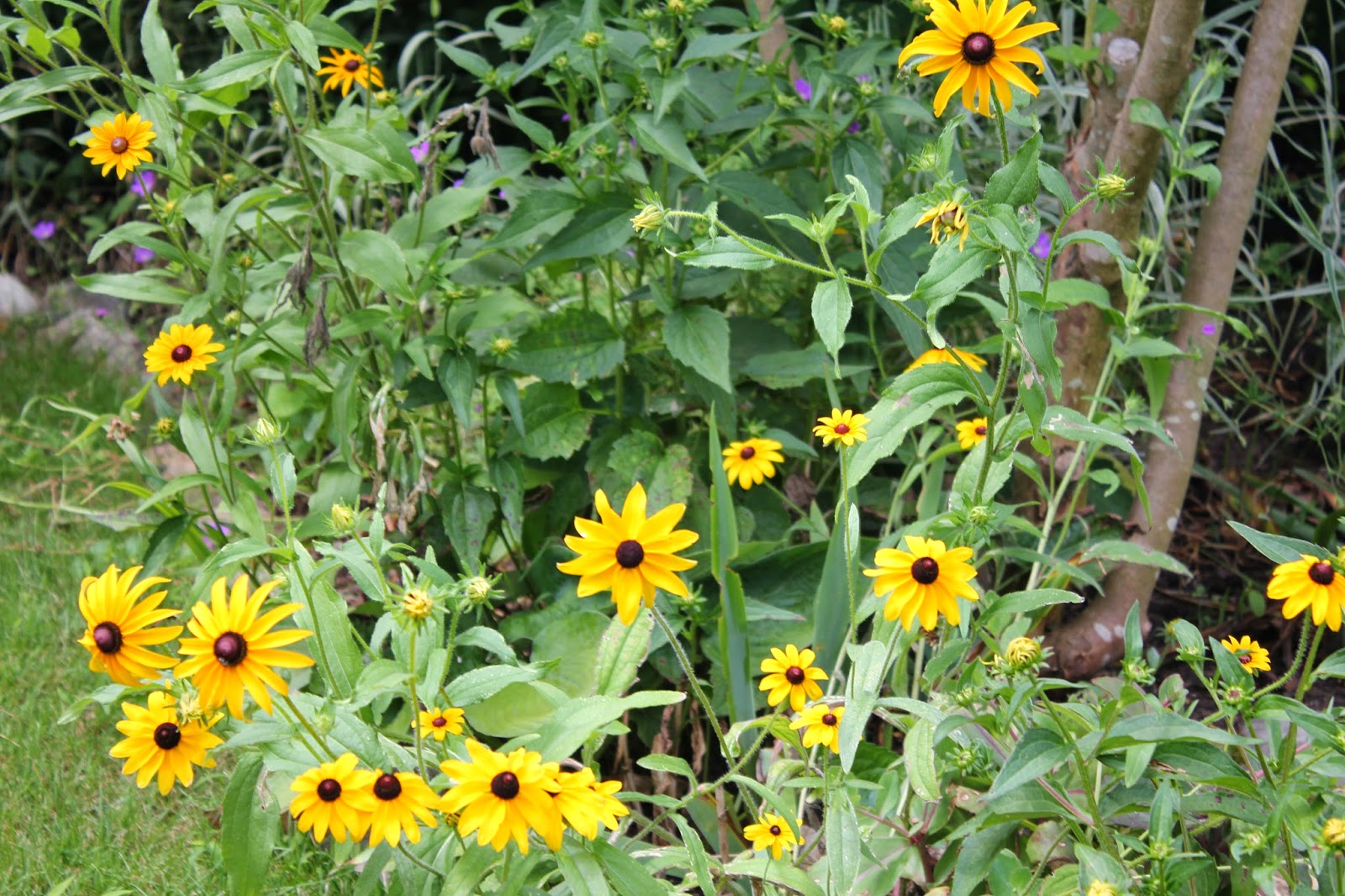Four days before my husband and I were set to host a 40th birthday party in our backyard for 60 guests, I decided to get a delivery of fresh mulch to spruce things up a bit and get the yard looking in top shape. It was a hot and humid day when the truck arrived and the workers started to lay the mulch. About six hours later, I returned home to find 60% of my plants looking dead or burned and the mulch smelled more like vinegar than freshly composted wood chips. To say I was devastated is an understatement. All my hard work to nurture small plants, all the annuals I planted early enough to look established in preparation for the party, all my woody shrubs I planted 2 years ago that had finally started to take off... destroyed.
Here is a photo of the same spot taken the day before:
So what happened? At first I thought it was that the mulch was too hot and put down on too hot of a day. But after talking to a few professionals and doing some of my own research online, it was concluded that the mulch was sour, i.e. toxic. Though not common, it has been known to happen. Lucky me.
According to an article on
Cornell University's website, if not enough oxygen gets into the center of the mulch, it may become laden with toxic byproducts such as methanol, acetic acid, ammonia and hydrogen sulfide gas. The mulch may become very acidic, with a pH in the range of 1.8-3.6 (properly composted organic material has a near neutral pH of 6.0-7.2).
The symptoms of toxic mulch usually occur within 24 hours of application. The damage resembles that caused by drought, poor drainage, fertilizer burn or pesticide misapplication. Symptoms include yellowing of leaf edges, scorched-looking leaves, defoliation and/or plant death.
Look at my beautiful Lady's Mantle below. The part that is brown and dead looking is the part of the plant that came in contact with the mulch and it's toxic fumes:
And the shade garden, that was so lush and full of life the day before:
Now looks like this:
The plants that suffered the most seem to be ones that were either sensitive, not-yet-fully-established (like the Coral Bells below), or annuals:
Interestingly, the Hostas didn't seem to be as affected as the Astilbe or Columbine.

The damage on the woody shrubs varied. But these Clethra look terrible now. Like the Hydrangeas, their leaves never even touched the mulch directly but were burned by the released gas:
Even the grass along the edges of the mulch got burned!
In the days that followed the mulch application, my landscaper took a sample to get tested. The pH of this mulch was 4.0 and had a high level of salt. Horrible stuff. I wished I had never got it and couldn't stand the sour smell it still had.
Again reading on Cornell's site, once the damage was done, there wasn't much to do and removing the mulch wouldn't do anything. But mentally, I needed some of it gone. I removed a lot of it around the patio and had the landscapers remove some more in some of the bigger beds. I trimmed off all the dead branches & leaves and replaced the dead annuals with new ones. Two weeks later, things seem to be doing ok now. Many things still do not look great, but the Hydrangeas are blooming and putting out new leaves, the Coral Bells have new leaf buds emerging and the grass is starting to green up again. I still may have to replace a few perennials that I'm trying to nurture back to health and I've had to fill in some holes with planters and annuals. But if nothing else, it's a lesson in plant resilience and letting go of things out of your control. That and... never do something like this last minute before a party!!




























